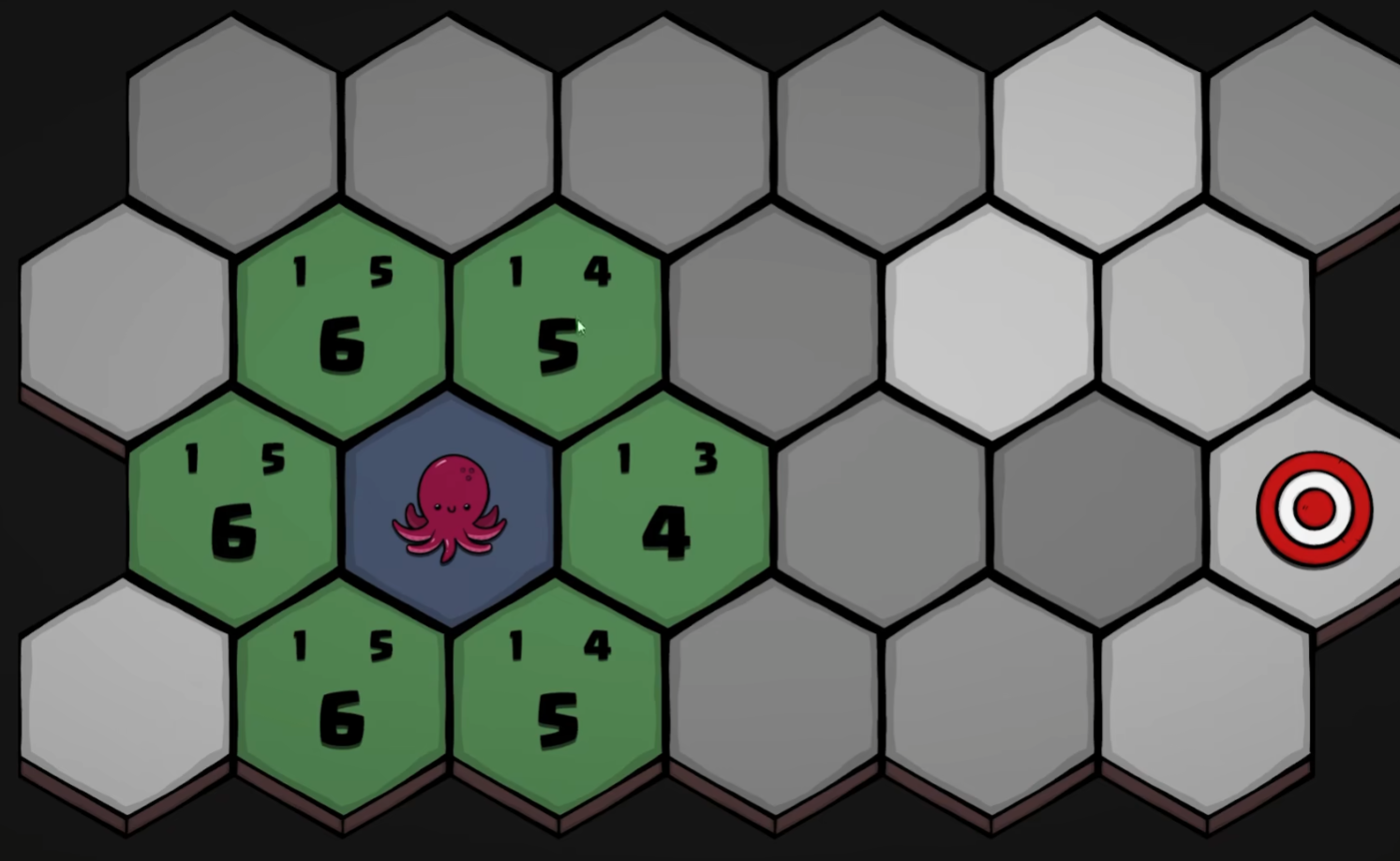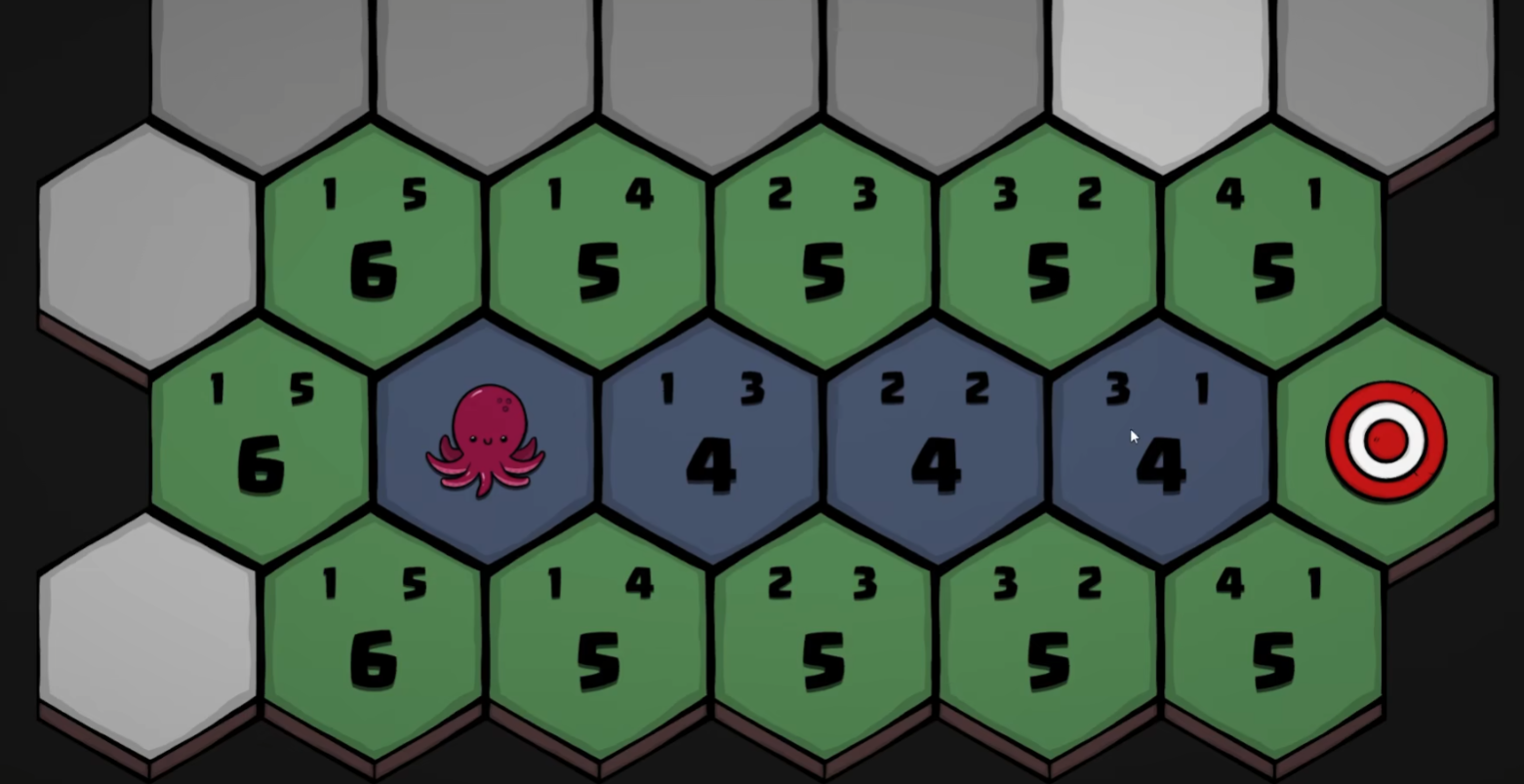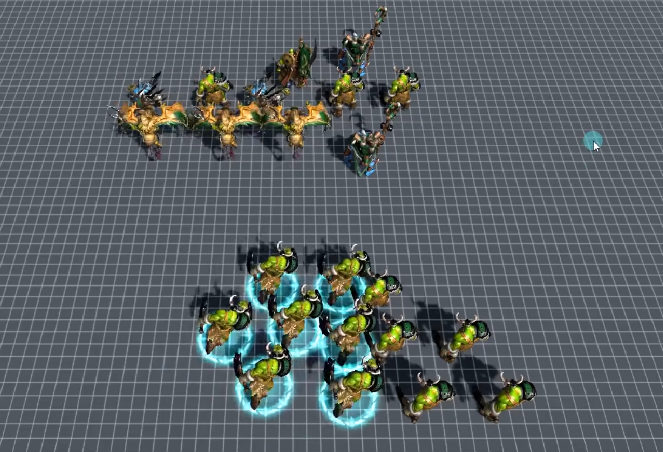1
2
3
4
5
6
7
8
9
10
11
12
13
14
15
16
17
18
19
20
21
22
23
24
25
26
27
28
29
30
31
32
33
34
35
36
37
38
39
40
41
42
43
44
45
46
47
48
49
50
51
52
53
54
55
56
57
58
59
60
61
62
63
64
65
66
67
68
69
70
71
72
73
74
75
76
77
78
79
80
81
82
83
84
85
86
87
88
89
90
91
92
93
94
95
96
97
98
99
100
101
102
103
104
105
106
107
108
109
110
111
112
113
114
115
116
117
118
119
120
121
122
123
124
125
126
127
128
129
130
131
132
133
134
135
136
137
| using System;
using System.Collections.Generic;
using JKFrame;
using Unity.VisualScripting;
using UnityEngine;
using UnityEngine.PlayerLoop;
using Random = UnityEngine.Random;
namespace AStar
{
public class AStarManager : SingletonMono<AStarManager>
{
private int _mapW;
private int _mapH;
private AStarNode[,] _nodes;
private List<AStarNode> _openList;
private List<AStarNode> _closeList;
public void InitMapInfo(int w, int h)
{
_mapW = w;
_mapH = h;
_nodes = new AStarNode[w, h];
for (int i = 0; i < w; i++)
{
for (int j = 0; j < h; j++)
{
var node = new AStarNode(i, j, Random.Range(0, 100) < 20 ? NodeType.Stop : NodeType.Walk);
_nodes[i, j] = node;
}
}
}
public List<AStarNode> FindPath(Vector2 startPos, Vector3 endPos)
{
if (startPos.x < 0 || startPos.x >= _mapW ||
startPos.y < 0 || startPos.y >= _mapH ||
endPos.x < 0 || endPos.x >= _mapW ||
endPos.y < 0 || endPos.y >= _mapH)
return null;
AStarNode start = _nodes[(int)startPos.x, (int)startPos.y];
AStarNode end = _nodes[(int)endPos.x, (int)endPos.y];
if (start.Type == NodeType.Stop|| end.Type == NodeType.Stop)
return null;
_closeList.Clear();
_openList.Clear();
start.Father = null;
start.F = 0;
start.G = 0;
start.H = 0;
_closeList.Add(start);
while (true)
{
FindNearlyNodeToOpenList(start.X-1,start.Y-1,1.4f,start,end);
FindNearlyNodeToOpenList(start.X-1,start.Y,1f,start,end);
FindNearlyNodeToOpenList(start.X-1,start.Y+1,1.4f,start,end);
FindNearlyNodeToOpenList(start.X+1,start.Y-1,1.4f,start,end);
FindNearlyNodeToOpenList(start.X+1,start.Y,1f,start,end);
FindNearlyNodeToOpenList(start.X+1,start.Y+1,1.4f,start,end);
FindNearlyNodeToOpenList(start.X,start.Y+1,1f,start,end);
FindNearlyNodeToOpenList(start.X,start.Y-1,1f,start,end);
if (_openList.Count == 0)
{
return null;
}
_openList.Sort(SortOpenList);
_closeList.Add(_openList[0]);
start = _openList[0];
_openList.RemoveAt(0);
if (start == end)
{
List<AStarNode> path = new List<AStarNode>();
path.Add(end);
while (end.Father != null)
{
path.Add(end.Father);
end = end.Father;
}
path.Reverse();
return path;
}
}
}
private int SortOpenList(AStarNode a, AStarNode b)
{
if (a.F>b.F)
{
return 1;
}
else
{
return -1;
}
}
private void FindNearlyNodeToOpenList(int x, int y,float g,AStarNode father,AStarNode end)
{
if (x < 0 || x >= _mapW || y < 0 || y >= _mapH) return;
var node = _nodes[x, y];
if (node == null || node.Type == NodeType.Stop|| _openList.Contains(node)|| _closeList.Contains(node)) return;
node.Father = father;
node.G = father.G + g;
node.H = Mathf.Abs(end.X - node.X) + Mathf.Abs(end.Y - node.Y);
}
}
}
|











